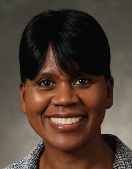by Wanda Brackins
Head of Global Wealth Management Diversity
RBC Wealth Management
How do you encourage white, male middle-managers to become more involved in diversity-related programs and help them understand that diversity is also about them?
Garnering support and effectively engaging white, male middle-managers in diversity efforts is a challenge across all industries, and the securities industry has been particularly challenged in this regard. Historically, the industry hasn’t been one to attract women or people of color; however, many securities firms today are implementing tools and initiatives to help diversify their workforce. The industry is making strides at the top of the house by engaging executive leadership, and at the individual contributor level through grassroots employee resource groups. Top-down, bottom-up… but what about the middle?
“The program has proven to be an effective way to engage middle managers and bridge the diversity chasm.”
At RBC Wealth Management, executive leaders serve as sponsors for the firm’s three employee resource groups. The direct reports of the executive leadership team – white, male middle-managers, included – serve as mentors in the Diversity Dialogs Reciprocal Mentoring Program, which matches seniorlevel leaders with high-potential and promising women and people of color.
As part of the program, mentees commit to engaging the leaders in conversations around the challenges or perceived roadblocks they face while striving to advance their careers. Like other mentoring programs, the leaders provide guidance and support to open the doors to other leaders and special assignments. The program has proven to be an effective way to engage middle managers and bridge the diversity chasm. Over the past four years, an average of 40 mentors and mentees have enrolled in the program each year, with participation continuing to grow. This program is achieving success because the mentoring relationship is as rewarding for the mentor as it is for the mentee.
In addition to participating in the Diversity Dialogs Reciprocal Mentoring Program, white, male middle-managers are engaged in the firm’s two diversity councils. First, the U.S. Diversity Leadership Council is comprised of 21 senior leaders and middle managers tasked with helping to drive the firm’s diversity and inclusion strategy and engage employees in their areas of responsibility to do the same.
Second, the U.S. Diversity Advisory Council is made up of 12 complex and branch directors, tasked with providing input to the Diversity Leadership Council on diversity-related tools and initiatives designed to support field recruiting, retention and brand-building efforts. Middle-managers serving on the Diversity Advisory Council are engaged in the planning stages of field-focused diversity initiatives, and their participation lets them impact the outcome of field diversity efforts. Members are able to share their ideas about how to recruit financial advisors and prospective clients in multicultural markets.
Finally, RBC Wealth Management complex and branch directors participate in the Field Diversity Initiatives Program, administered by the firm’s Multicultural Employee Alliance (MEA) employee resource group. The program asks interested participants to submit nominations explaining their goals of promoting diversity initiatives and engaging employees in their areas, and awards up to three branch directors each year with funds to host a diversity-related client, brand-building, or community outreach event.
Clearly, RBC Wealth Management’s diversity and inclusion efforts are designed to engage employees at all levels. As we continue to expand our diversity programs and reach out to emerging multicultural markets, the growing number of white, male middle-managers and advisors are beginning to understand that they, too, are diversity.
This article has been sponsored by:
RBC Wealth Management

Wanda Brackins
Head of Global Wealth Management Diversity
RBC Wealth Management
“The industry is making strides at the top of the house by engaging executive leadership, and at the individual contributor level through grassroots employee resource groups.”






